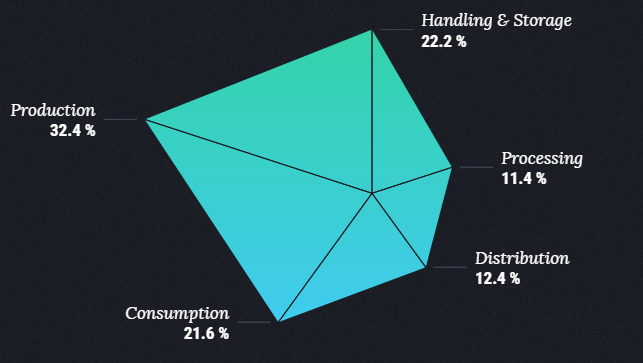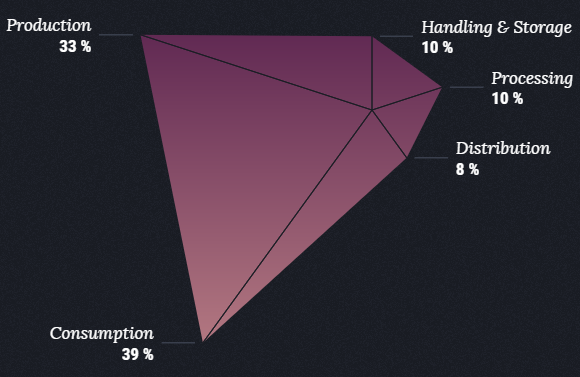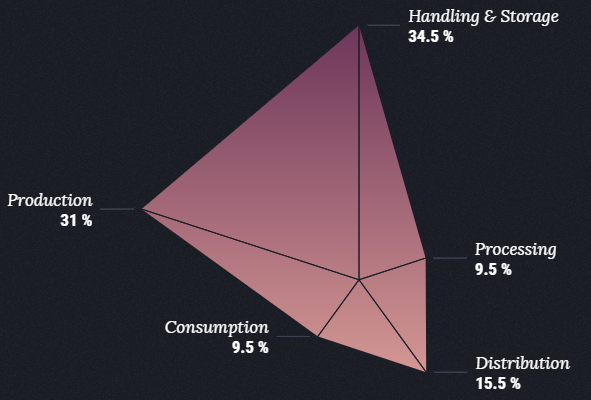Stages of food waste in the world
The issue of food losses is of critical importance in the efforts to combat hunger, raise income and improve food security in the world’s poorest countries. Food losses have an impact on food security for poor people, on food quality and safety, economic development and the environment. The exact causes of food losses vary throughout the world and are dependent on the specific conditions and local situation in a given country.
Stages of food waste; North America, Oceania and Europe
Sub-Saharan Africa, South and Southeast Asia
Sub-Saharan Africa and South and Southeast Asia have a high amount of food waste in the stages of storage and handling due to poor infrastructure for food preserving while rich countries in North America, Oceania and Europe have the most food waste in stages of consumption and production. Food waste in industrialized countries can be reduced by raising awareness among food industries, retailers and consumers. There is a need to find good and beneficial use for safe food that is currently thrown away. By learning how to reuse leftover food to feed humans and animals, and to produce energy and compost, food waste can become a valuable input to close nutrient cycles.
In order to improve food production to reduce food loss, AGRIVI farm management software gives farmers best farming practices in the form of tasks. For over 100 different crops, the system guides farmers on what to do during a specific season. They can also track all of their farm activities on fields, inputs of fertilizers, pesticides, fuel, work hours of workers and machinery. Using knowledge-intensive farm technologies, such as the AGRIVI system for the tracking of crop production, farmers can make the right decisions at the farm level. In the end, the system gives them an insight into profitability and productivity of their farm with powerful AGRIVI analytics and reports.
Farmers are the managers of the most productive lands on the Earth. Using best farming practices they can reduce food loss and thus improve the food chain.
Change the way food is produced – use AGRIVI.
Text sources: Foodtank || Food and Agriculture Organization of the United Nations Image source: World Food Clock







